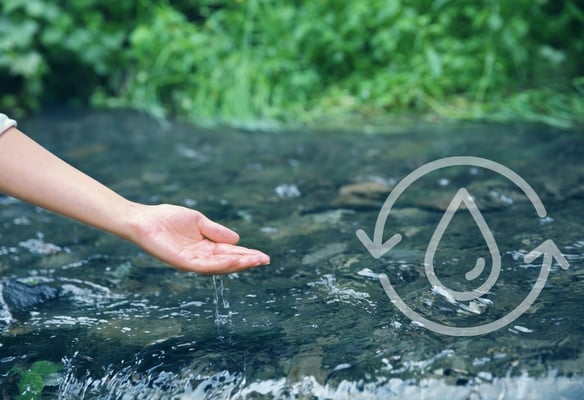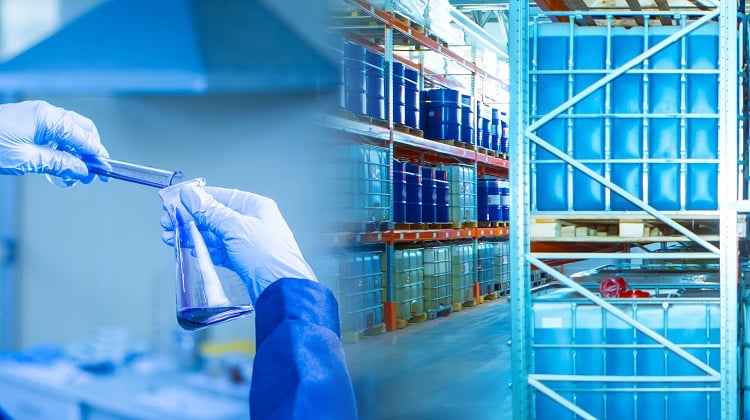A generation ago, evaluating parts cleaner options was a relatively straightforward pursuit. First, you needed to measure the effectiveness of your chosen cleaning system, and then you needed to analyze the expected costs. If a product cleaned your parts at a cost-effective price point, there wasn’t really any reason to view alternative options. Efficiency and price are still foundationally important, but there’s a new aspect that needs to be considered when weighing your options: environmental impact.
Increasingly, organizations that prioritize environmental impact are turning to aqueous parts washers for sustainable parts cleaning.
WHAT IS AQUEOUS CLEANING?
Aqueous cleaning is a water-based process that involves mixing water with different detergents, surfactants, and emulsifiers, then using heat and agitation to clean industrial parts and machines over time. This innovative approach to parts cleaning can be deployed in several different ways, including spray cleaning, immersion cleaning, and ultrasonic cleaning. Regardless of the specific method, aqueous cleaning is recognized throughout many industries for its combination of high-performance cleaning, affordability, and reduced environmental impact when compared with other leading options.
AQUEOUS CLEANING VERSUS SOLVENT CLEANING
Unlike water-based aqueous cleaning methods, solvent cleaners rely on a specially formulated fluid that uses one or more different solvents. Immersing parts into this continuously filtered and distilled formula using a vapor degreaser removes grease, soil, and unwanted debris. Solvent cleaning is effective when it comes to cleaning industrial parts, but it leaves a lot to be desired in terms of environmental impact and part cleaning sustainability.
Aqueous cleaning relies heavily on thermal and mechanical energy. As such, selecting the right equipment is essential for optimal results. Maintenance shops typically use equipment with a low parts-throughput and manual cleaning, spray cleaning, and immersion cleaning. On the other hand, industrial operations primarily use high parts-throughput equipment that automates the cleaning process. In both cases, the initial investment in equipment can be greater than it would be when using solvent cleaners, but the long-term advantages outweigh the costs:
During operation, aqueous cleaning produces little to no chemical emissions. Waste originating from the soiled workpieces such as oil and sludge can be collected and disposed of safely.
The same cannot be said for solvent cleaners. Volatile organic compounds that evaporate from solvent cleaning operations contribute to air pollution problems such as the formation of ground-level ozone and related public health concerns. As with aqueous cleaning, the soils from the workpieces must be separated and disposed with safely, however, the spent solvent itself produces another hazardous waste stream.
In addition to an increased negative environmental impact, solvent cleaners can also expose organizations to increased regulations and their associated costs.
TOXICOLOGY OF CHEMICALS USED IN AQUEOUS WASHERS
Aqueous parts washers also rely on different surfactants, builders, and additives for detergency. These include anti-corrosive agents, dispersants, and even solvents.
Surfactants
Surfactants or surface-active agents are organic compounds that serve several functions in metal cleaners such as lowering the surface tension between oil and water. They can be anionic, cationic, non-ionic, or amphoteric. Traditionally, anionic surfactants have been the most commonly used, but many solutions now use non-ionized surfactants for their sustainable parts cleaning.
Builders
Typically, builders are inorganic alkali metal salts such as hydroxides, silicates, phosphates, and carbonates. Hydroxides such as sodium and potassium hydroxides are effective at saponifying fatty acids (oils), and splitting esters found in some lubricants. Silicates provide several advantages to metal cleaning, including emulsification properties and inhibiting metal corrosion.
Phosphates have a variety of properties such as detergent boosters but are less utilized due to their eutrophication effect in waterways in rivers and lakes. Carbonates are favored since they are less expensive than other builders. They provide high alkalinity to cleaners and are good at buffering pH as they provide a good source of reserve alkalinity.
Specialized Additives
To prevent rusting and corrosion, most aqueous parts washer formulas use anti-corrosive agents and other additives. Additionally, aqueous cleaning formulas can include water-soluble solvents, though the volume of solvents allowed is capped at 5 - 10% of the overall concentrate. If an aqueous parts washer formula contains 10-50% solvents, it is considered semi-aqueous.
ENVIRONMENTAL BENEFITS OF USING AN AQUEOUS PARTS WASHER
There are significant operational advantages to using an aqueous parts washer instead of a solvent cleaner, but one of the biggest benefits is the reduced environmental impact.
Compared to systems based on solvent-based cleaning, aqueous parts washer equipment produces less hazardous waste and fewer chemical emissions. This isn’t just an environmental benefit, it’s an operational one too. Although aqueous cleaning produces mostly biodegradable compounds, some may lead to eutrophication in rivers and lakes. However, disposing of this waste in recycling facilities is an easy, straightforward process.
Aqueous cleaning leverages water recirculation to reuse as much of the solution as possible. Water-oil separators and coagulation sedimentation equipment enable maintenance shops and industrial facilities to improve parts cleaning efficiency and sustainability.
OCCUPATIONAL HEALTH ADVANTAGES OF AQUEOUS CLEANING
In addition to the environmental benefits, aqueous parts cleaning also has occupational health advantages over other industrial parts cleaning methods. Although the anionic surfactants and alkalis included in some aqueous formulas may irritate the skin and eyes, in general, aqueous cleaning presents a low risk to close contacts.
On top of that, many industrial operations rely on high parts-throughput equipment that automates the parts cleaning process and reduces the risk of skin and eye contact. The toxic compounds generated by aqueous cleaning don’t pose a significant risk to humans. Environmental issues can occur when the material is released directly into the environment, but these can also easily be avoided by processing it at a specialized waste recycling or treatment facility.
Overall, aqueous cleaning offers a smarter, more sustainable way to clean and degrease machine parts.
Schedule a free consultation with the PROCECO team today.

%20(1).webp)
.webp)
